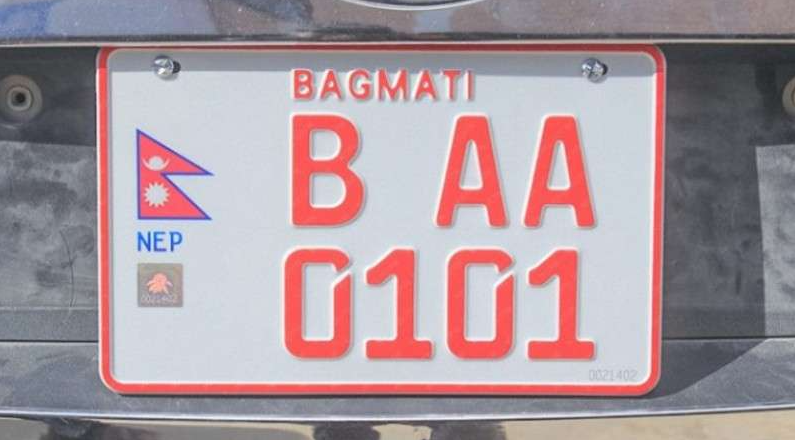Kathmandu: The government has backtracked on its decision to impose fines on vehicles without embossed number plates, following widespread opposition and confusion over the language and legal validity of the plates.
In a statement issued Tuesday, the Department of Transport Management (DoTM) clarified that while embossed number plates remain part of the country’s digitization drive, there will be no immediate penalties for vehicle owners who have yet to install them.
On August 4, a ministerial committee chaired by Minister for Physical Infrastructure and Transport, Devendra Dahal, decided that from September 17 all vehicles—government, private, and public—would be required to have embossed plates. The DoTM later instructed that as of August 19, new registration, ownership transfer, and renewal would only be processed for vehicles fitted with the plates.
The announcement quickly triggered a backlash. Vehicle owners and civil society groups criticized the decision as hasty, costly, and impractical. On social media, many demanded that the plates be written in Nepali script, citing court orders that allegedly supported their case.
Amid mounting resistance, the DoTM softened its stance. “While the plan is to gradually introduce embossed plates across all vehicles, there will be no immediate fines or penalties for failing to install them from September 17,” the Department clarified. Instead, it urged vehicle owners to voluntarily fit the plates at a convenient time.
One of the fiercest debates centred on language. Critics argued the plates should be in Nepali, the country’s official language, not English. The DoTM dismissed the claim, pointing to a December 2019 ruling by the Constitutional Bench of the Supreme Court, which found no constitutional or legal flaw in using English script. The court had also quashed writ petitions demanding Nepali-only plates.
The Department further noted that since other official documents—including passports, citizenship certificates, driver’s licenses, and national ID cards—already use English script, there is no reason the same cannot apply to number plates.
The introduction of embossed number plates is tied to the government’s “Digital Nepal” vision, which aims to modernize service delivery. The DoTM argues that the plates will improve data accuracy, enable AI-based traffic and road management, and ensure transparency in permits. They are also expected to help track stolen vehicles, curb criminal activities and tax evasion, and strengthen disaster management.
Officials maintain that the plates will eventually guide the formulation and implementation of transport policies and programmes.
The legal groundwork for embossed plates was laid in 2010 through amendments to the Transport Management Regulations. The fiscal budget for 2015/16 formally announced their introduction, and a ministerial decision in July 2015 directed the DoTM to begin procurement.
An international tender was issued, and in May 2016, Nepal signed a contract to produce 2.5 million plates over five years. The latest amendment, valid until November 2025, extended the contract deadline. The Commission for the Investigation of Abuse of Authority (CIAA) has also instructed the Department and suppliers to fulfill all obligations within this period.
To manage implementation, the DoTM issued guidelines on embossed plates in 2024.
Addressing public concerns, the DoTM rejected claims that the plates are of poor quality or that vehicle data would be sent abroad. It stated that the plates meet international standards and that all data will be stored securely on servers within the Department’s premises in Nepal.
“The quality of embossed plates has been ensured as per requirements, and all vehicle data will remain inside the country. We urge the public not to be misled by misinformation and rumors,” the statement read.
Despite stepping back from immediate enforcement, the government remains committed to introducing embossed plates nationwide. For now, authorities are banking on voluntary compliance rather than penalties.



Comment Here